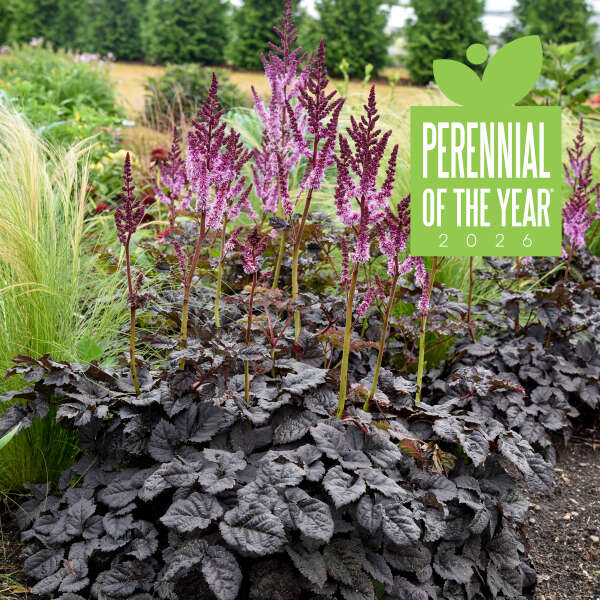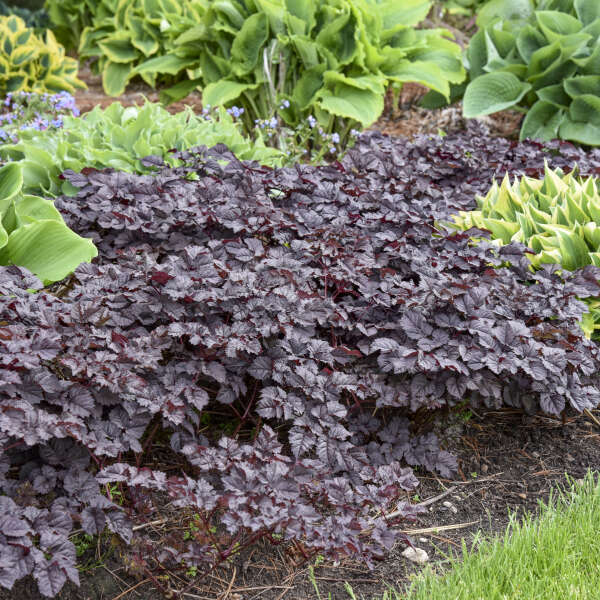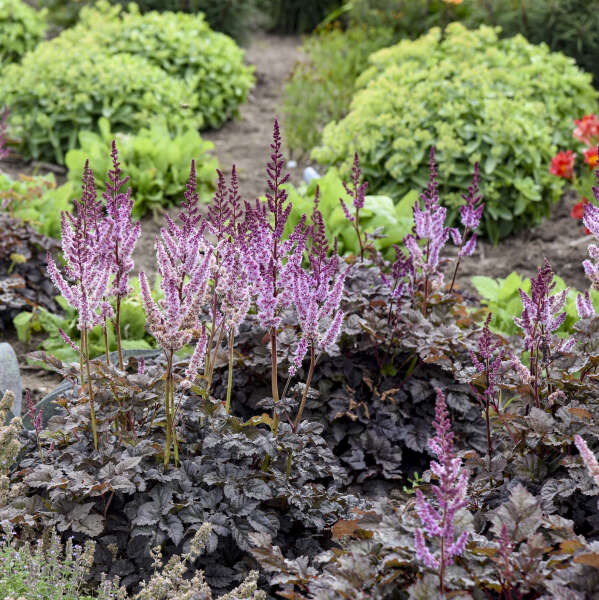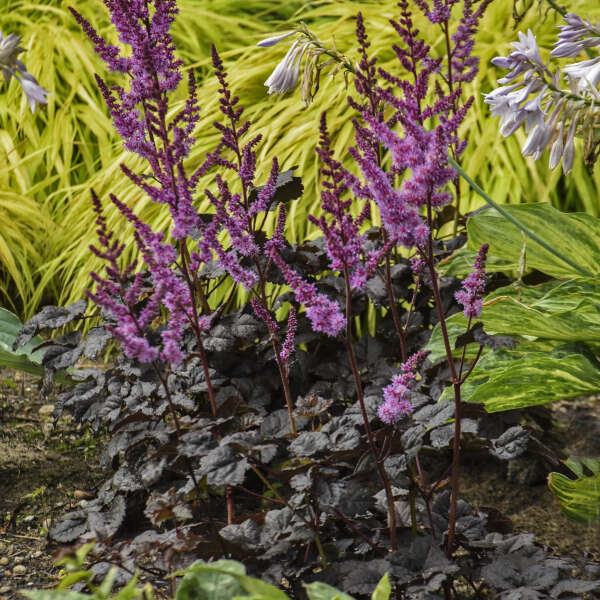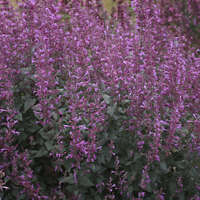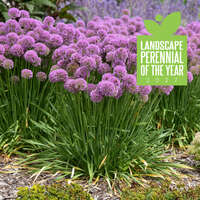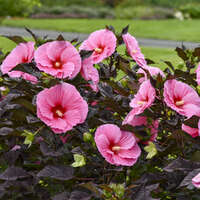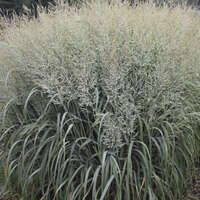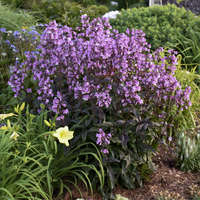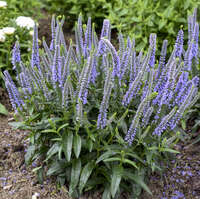Astilbe 'Dark Side of the Moon' CPBRAF PP35461



Common Name: Astilbe
An instant classic for the landscape! 'Dark Side of the Moon' is the only dark leafed Astilbe with purple flowers that's on the market. Rich deep chocolate burgundy leaves form an incredibly attractive mound of foliage. Emerging leaves are yellow with a dark margin with a glossy sheen that become completely dark as they age. Dark stems hold raspberry buds that burst forth with rosy purple flowers. This performs best both for growing and flowering in full sun in the north with adequate moisture, but also grows in shade.
A member of Astilbe chinensis (Chinese Astilbe). A later blooming species useful for extending the bloom season into late summer. Foliage is deeply incised, coarsely textured, and often bronze-green in color. Flowers are borne on narrow, branched panicles. Though garden performance is far superior in moist soils, members of this species are moderately drought tolerant.
